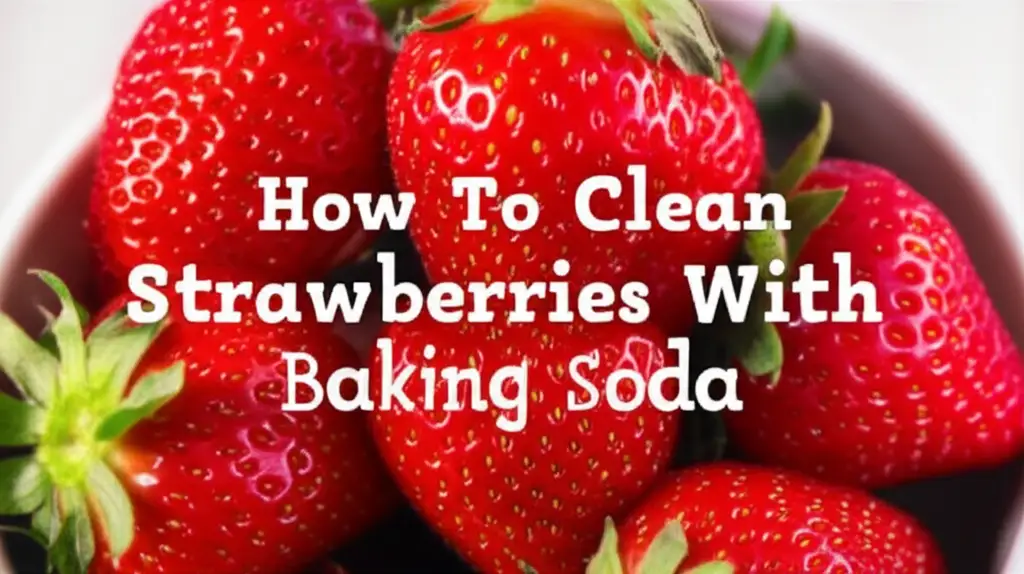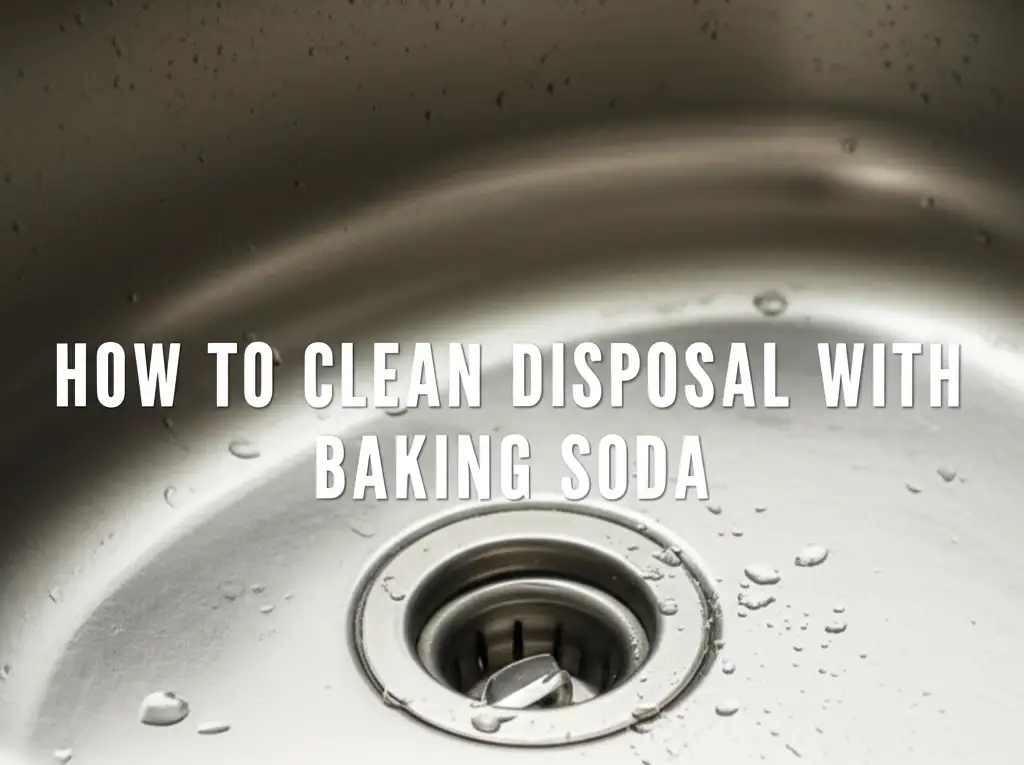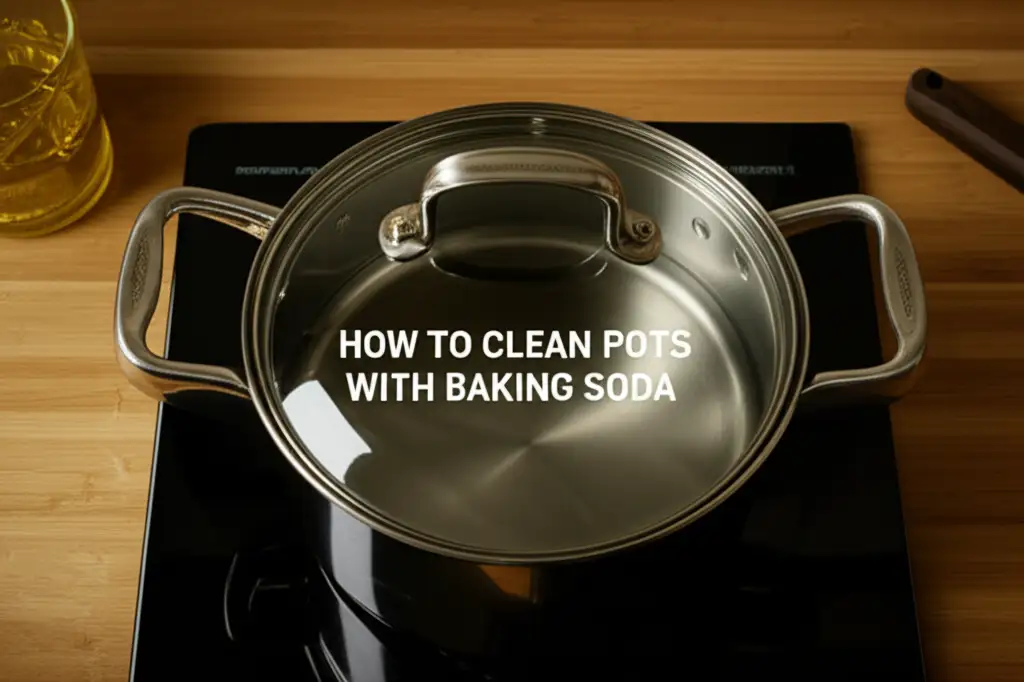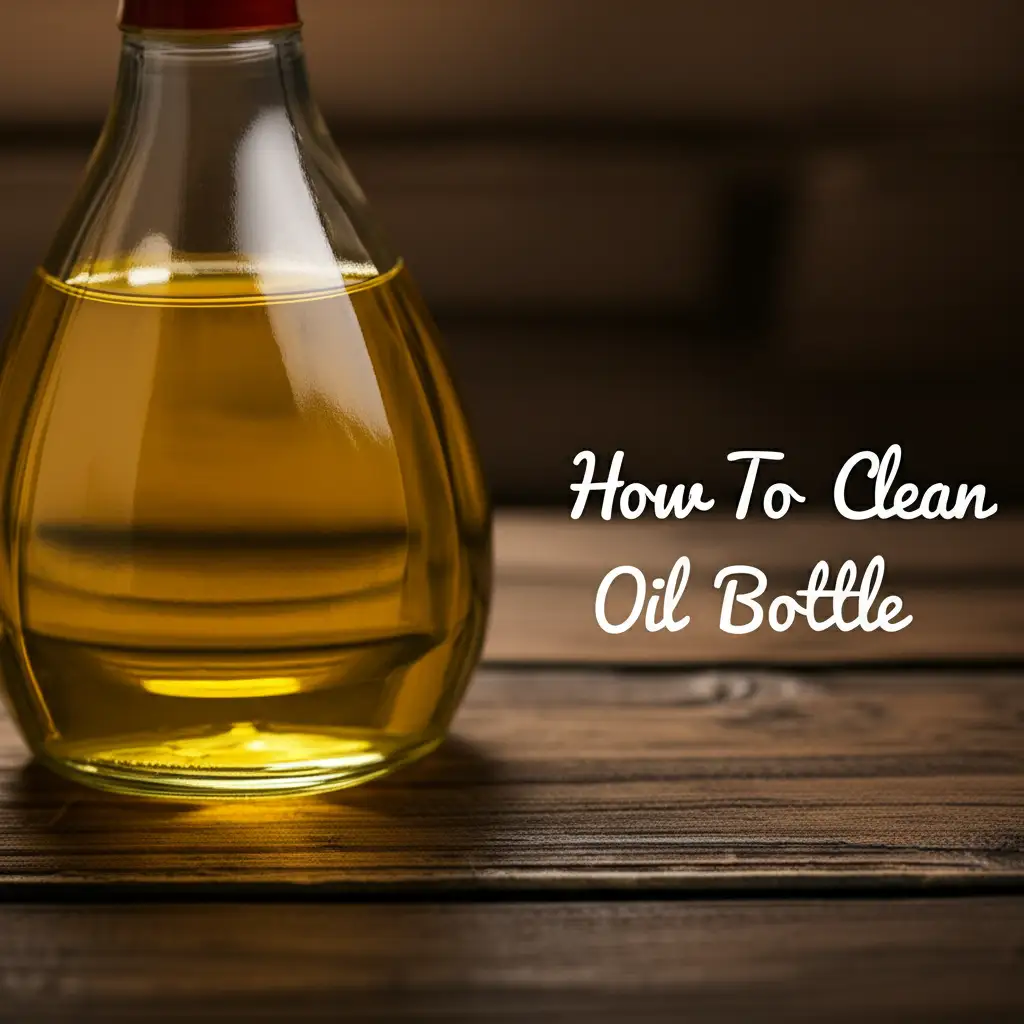· Kitchen Cleaning · 22 min read
How To Clean Strawberries With Baking Soda

Unlock Peak Freshness: How To Clean Strawberries With Baking Soda
Strawberries are a summer delight. Their sweet taste and vibrant color make them a favorite fruit. However, these delicate berries can carry dirt, germs, and pesticide residues. You want to enjoy them safely. Learning how to clean strawberries with baking soda ensures they are fresh and ready to eat. This guide helps you prepare your berries properly.
Cleaning strawberries goes beyond a simple rinse. Their bumpy surface holds onto contaminants. Baking soda offers a natural and effective solution. It helps lift away unwanted substances. This method improves both the cleanliness and the taste of your fruit. We will explore the science behind this powerful cleaner. We will provide a step-by-step guide. You will also learn common mistakes to avoid. Prepare to enjoy perfectly clean strawberries every time.
Takeaway
- Prepare a baking soda solution: Mix 1 teaspoon of baking soda per 4 cups of water.
- Soak berries gently: Submerge strawberries for 5-10 minutes, avoiding excessive time.
- Rinse thoroughly: Wash berries under cold running water to remove all residue.
- Dry completely: Pat strawberries dry with a paper towel or clean cloth before storing.
How do you clean strawberries with baking soda?
To clean strawberries with baking soda, you dissolve 1 teaspoon of baking soda in 4 cups of water in a large bowl. Gently add the strawberries to this solution. Let them soak for 5-10 minutes. Afterward, rinse them thoroughly under cold running water. This removes dirt, residues, and any baking soda taste, leaving you with clean, fresh berries.
Understanding Baking Soda’s Power for Cleaning Strawberries
Baking soda, chemically known as sodium bicarbonate, is a versatile household product. Many people know it for baking or deodorizing. It also works as a mild abrasive and an effective cleaning agent. These properties make it ideal for cleaning strawberries with baking soda. Its gentle nature does not harm delicate fruit skins. Yet, it is strong enough to tackle unwanted grime.
When you dissolve baking soda in water, it creates an alkaline solution. This alkalinity helps to neutralize acidic substances often found on fruit surfaces. It also works by breaking down waxy coatings and residues. These residues can trap dirt and pesticides. The very fine, crystalline structure of baking soda acts as a gentle scrubbing agent. This helps dislodge particles from the berry’s bumpy surface. You might not see it, but baking soda gently buffs away impurities.
Baking soda is a food-safe ingredient. This is a crucial point when choosing a method for cleaning produce. Unlike harsh chemical cleaners, baking soda leaves no harmful residue when rinsed properly. It helps ensure that your strawberries are not just visually clean but also safer to consume. This natural approach is good for your family and the environment. You avoid harsh chemicals on your food. This makes it a popular choice for health-conscious individuals.
The Gentle Abrasive Action
The small crystals in baking soda provide a light abrasive effect. This action helps lift dirt and waxy layers from the strawberry surface. Think of it like a very soft scrub brush. It loosens particles without damaging the delicate skin. This gentle scrubbing helps remove stubborn contaminants that plain water might miss. It gets into the small crevices of the strawberry.
Neutralizing Acidity and Breaking Down Residues
Baking soda is alkaline. When it mixes with water, it creates a slightly basic solution. Many common pesticides and contaminants have an acidic component. The alkaline solution helps to neutralize these acidic compounds. This neutralization makes them easier to rinse away. It also helps break down the sticky, waxy layers that conventional produce washes might struggle with. This makes the surface less hospitable for lingering residues. This is similar to how it tackles tough grease on kitchen surfaces or even helps clean various household items, making it a reliable solution for many cleaning tasks. You can learn more about general cleaning power by checking out our guide on how to clean with vinegar and baking soda.
Step-by-Step Guide: How to Clean Strawberries with Baking Soda
Cleaning your strawberries with baking soda is a straightforward process. It takes only a few minutes. Following these simple steps ensures you get the freshest, cleanest berries possible. I always find this method incredibly satisfying. You can literally see the difference after a good wash.
Gather Your Supplies
Before you begin, make sure you have everything you need. This keeps the process smooth and efficient.
- Fresh strawberries
- A large bowl
- Baking soda (pure sodium bicarbonate)
- Cold running water
- A colander
- Paper towels or a clean kitchen towel
Preparing the Baking Soda Solution
The first step is to create the cleaning solution. The right concentration is important for effective cleaning without leaving a taste.
- Choose a spacious bowl: Select a bowl large enough to comfortably hold all your strawberries. You want them to be fully submerged.
- Add water: Fill the bowl with cold water. Use about 4 cups of water for every pound of strawberries. Adjust the amount of water based on how many berries you are cleaning.
- Mix in baking soda: For every 4 cups of water, add 1 teaspoon of baking soda. Stir the water gently until the baking soda dissolves completely. You should not see any visible clumps.
Soaking the Strawberries
This is where the baking soda does its work. Proper soaking time is important.
- Add strawberries: Gently place your strawberries into the baking soda solution. Make sure they are fully submerged. Do not overcrowd the bowl. If you have many berries, clean them in batches.
- Soak time: Let the strawberries soak for 5 to 10 minutes. For heavily soiled berries, you can extend the time slightly, but do not exceed 15 minutes. Soaking too long can make the berries absorb too much water. This will affect their texture and flavor. During this time, you might notice the water becoming slightly cloudy. This means the baking soda is doing its job, lifting dirt and residues from the berries.
Rinsing and Drying
Rinsing is a critical step to remove all residues and leave your strawberries pristine.
- Drain the solution: After soaking, carefully pour the strawberries and the solution into a colander. Let the dirty water drain away completely.
- Rinse thoroughly: Place the colander under cold running water. Rinse the strawberries vigorously for about 1 to 2 minutes. Make sure to move them around with your hands. This ensures all baking soda residue and loosened dirt are washed away. You want to make sure no gritty texture remains. This rinsing is similar to how you would rinse a coffee maker after cleaning it with baking soda, ensuring no residue is left behind for the next use. For more details on cleaning kitchen appliances, you might find our guide on how to clean coffee maker with baking soda useful.
- Dry completely: This step is crucial for maintaining freshness. Lay the rinsed strawberries in a single layer on paper towels or a clean kitchen towel. Gently pat them dry. Make sure they are completely dry before storing them. Any residual moisture will encourage mold growth and spoilage.
By following these steps, you will have perfectly clean, fresh strawberries ready for snacking, baking, or any recipe you desire. Enjoy the peace of mind that comes with knowing your fruit is truly clean.
Benefits of Washing Strawberries with Baking Soda
Beyond simply removing visible dirt, cleaning your strawberries with baking soda offers several notable advantages. This method enhances food safety and can even improve the overall quality of your berries. I have found it significantly extends their shelf life, which is a huge plus.
Removing Pesticide Residues
One of the primary concerns with conventionally grown strawberries is the presence of pesticide residues. Strawberries are often referred to as a “dirty dozen” fruit. This means they are known to carry higher levels of pesticides. A simple water rinse may not be enough to remove these chemicals effectively. Baking soda helps significantly reduce these residues. Its alkaline nature helps break down many common pesticide compounds.
Studies suggest that baking soda solutions can be more effective than plain water in removing surface pesticides. This means you are reducing your exposure to these chemicals. This gives you peace of mind. You can enjoy your berries without worrying about what might be clinging to their skin. Choosing this method is a conscious step towards healthier eating.
Eliminating Dirt, Grime, and Bacteria
Strawberries grow close to the ground. This makes them susceptible to accumulating dirt, tiny insects, and various microorganisms. Even if they look clean, unseen contaminants can be present. The gentle abrasive action of baking soda helps dislodge these particles from the fruit’s bumpy surface. It gets into those small nooks and crannies where dirt loves to hide.
The alkaline environment created by baking soda can also inhibit the growth of certain bacteria. While it is not a sterilizer, it does contribute to a cleaner, safer berry. This comprehensive cleaning ensures that you are consuming fruit that is truly clean. It improves overall food hygiene. This method helps to ensure that your fruit is not just visually appealing but also safe for consumption.
Extending Freshness and Shelf Life
Moisture is the enemy of fresh berries. But so are bacteria and mold spores that thrive in moisture. When you properly clean strawberries with baking soda and then thoroughly dry them, you remove contaminants that accelerate spoilage. This includes mold spores and bacteria. These often cling to the fruit’s surface.
By getting rid of these unwelcome guests, you help prevent premature rotting and mold growth. Strawberries cleaned and dried properly tend to last longer in the refrigerator. This means less food waste and more enjoyment of your delicious berries. It is a simple step that yields significant benefits in terms of freshness and longevity. You will notice your strawberries stay firmer and brighter for days longer.
Common Mistakes to Avoid When Cleaning Strawberries
While cleaning strawberries with baking soda is straightforward, some common pitfalls can diminish its effectiveness or even harm your berries. Avoiding these mistakes ensures the best results. I learned some of these the hard way, and it made a big difference in how long my berries lasted.
Over-Soaking Strawberries
One of the most frequent mistakes is leaving strawberries in the baking soda solution for too long. Strawberries are delicate and absorb water easily.
- Consequence: Over-soaking makes them soggy. They lose their firm texture. This also dilutes their natural flavor.
- Solution: Stick to the recommended soaking time of 5-10 minutes. For very dirty berries, extend it to a maximum of 15 minutes. Any longer than that and you risk ruining the fruit.
Washing Berries Too Early
It is tempting to wash a whole batch of strawberries as soon as you bring them home. However, washing them prematurely can significantly shorten their shelf life.
- Consequence: Moisture is the primary cause of mold and spoilage in berries. Washing them and then storing them wet creates a perfect breeding ground for mold.
- Solution: Wash strawberries only right before you plan to eat them. If you must wash them in advance, ensure they are absolutely, completely dry before storage. This requires diligent patting and air-drying.
Not Rinsing Thoroughly Enough
After soaking, rinsing is crucial. Failing to rinse adequately can leave a gritty residue or a slight baking soda taste on your berries.
- Consequence: A gritty texture or a soapy taste can ruin the enjoyment of your fresh strawberries. It also means you might not have fully removed all the loosened dirt and residues.
- Solution: Rinse the strawberries vigorously under cold running water for at least 1-2 minutes. Use your hands to gently move them around in the colander. This ensures all surfaces are exposed to fresh water. You want to make sure every speck of baking soda and dirt is gone.
Removing Stems Before Washing
Many people remove the green caps (calyxes) and stems before washing. This is a mistake.
- Consequence: Removing the stems exposes the inner flesh of the strawberry to water. This makes the berry absorb more water, leading to sogginess and faster spoilage. It also exposes the fruit to direct contact with contaminants.
- Solution: Always wash strawberries with their stems intact. Remove the stems only after the berries are clean and dry, just before you are ready to eat them. This preserves their natural barrier.
By avoiding these common errors, you will master the art of cleaning strawberries with baking soda. Your berries will be perfectly fresh, firm, and delicious.
Comparing Cleaning Methods: Baking Soda vs. Other Washes
When it comes to cleaning produce, especially delicate fruits like strawberries, you have several options. Each method has its pros and cons. Understanding these differences helps you choose the best approach for your needs. I have experimented with many methods over the years, and each has its place.
Plain Water Rinse
This is the most common and simplest method. Most people rinse their fruits and vegetables under cold tap water.
- Pros: Easy, readily available, no extra cost.
- Cons: While a water rinse can remove loose dirt and some surface contaminants, it is often insufficient for sticky residues or waxy pesticide coatings. It does not actively break down or neutralize substances. It mainly relies on physical force.
Vinegar Solution
Vinegar, typically white vinegar or apple cider vinegar, is another popular natural cleaning agent for produce. Its acidic nature is effective against bacteria and can help break down some residues.
- Pros: Effective against bacteria, good for breaking down certain waxy films. It is a natural disinfectant.
- Cons: Vinegar can leave a slight taste on delicate fruits if not rinsed very thoroughly. Some people dislike the smell. It might not be as effective as baking soda for certain types of pesticide removal or breaking down alkaline residues. For a deeper dive into how vinegar and baking soda work together, especially in household cleaning, you can read our guide on how to clean dishwasher with vinegar and baking soda. This comparison highlights how different natural cleaners have specific strengths.
Commercial Produce Washes
Many companies sell specialized produce washes. These are marketed as superior cleaners for fruits and vegetables.
- Pros: Convenient, formulated to remove various contaminants. They often boast specific enzymes or surfactants.
- Cons: Can be expensive for regular use. Ingredients may not always be fully transparent. Some may contain chemicals you prefer to avoid on your food. Their effectiveness compared to simple homemade solutions is often debated. Many of these washes are based on similar principles to vinegar or baking soda.
Baking Soda Method
As discussed, baking soda offers a balanced approach. It combines gentle abrasion with alkalinity.
- Pros:
- Effective: Helps break down waxy layers and neutralize acidic pesticides.
- Gentle: Does not harm delicate fruit skin.
- Food-safe: Leaves no harmful residues when rinsed well.
- Cost-effective: Baking soda is inexpensive and widely available.
- Taste-neutral: When rinsed properly, it leaves no taste behind.
- Cons: Requires a short soaking time, so it is not an instant rinse. Proper rinsing is crucial to avoid a powdery texture.
Conclusion on Methods: For strawberries, the baking soda method often stands out. It provides a robust clean without the strong taste of vinegar or the cost of commercial washes. It directly addresses the removal of pesticides and dirt. While all methods aim for cleaner fruit, baking soda provides a unique combination of effectiveness, gentleness, and natural safety. It is my preferred method for ensuring my berries are truly pristine. For other items that require thorough cleaning, such as stainless steel pans where food residues can be stubborn, baking soda also proves to be an excellent, non-toxic solution, demonstrating its versatility across kitchen items. You might find our article on how to clean stainless steel pans with baking soda helpful.
Proper Storage After Cleaning Strawberries
Once your strawberries are sparkling clean, storing them correctly is essential to maintain their freshness. Improper storage can quickly undo all your careful cleaning efforts. The goal is to keep them dry and cool. This prevents mold and keeps them firm and delicious for longer.
The Importance of Thorough Drying
This cannot be emphasized enough. Moisture is the biggest enemy of fresh berries. Even a little bit of dampness encourages mold growth. Mold spores thrive in moist environments.
- Why it matters: Wet strawberries will spoil much faster, often within a day or two. They will become mushy and develop fuzzy mold spots.
- How to dry: After rinsing, spread your strawberries in a single layer on a clean, absorbent surface. Use paper towels or a clean kitchen towel. Gently pat them dry. Allow them to air-dry for a short period, if possible, before storing. Ensure every berry is completely dry before proceeding.
Choosing the Right Storage Container
The container you choose can impact how long your strawberries stay fresh. You want something that allows for air circulation.
- Breathable containers: Do not store strawberries in airtight containers immediately after washing. This traps moisture and accelerates spoilage.
- Options:
- Original container: If the original container has vents, you can line it with a fresh paper towel and place the dry berries back in.
- Paper towel-lined container: A shallow container or a colander lined with paper towels works well. The paper towels absorb any residual moisture.
- Single layer: If possible, store them in a single layer. This prevents pressure points and bruising.
Refrigeration Techniques
Cold temperatures slow down the ripening process and inhibit mold growth.
- Where to store: Place the container of dry strawberries in the main compartment of your refrigerator. Avoid placing them in the coldest parts, like the very back or against the cooling vents.
- Temperature: The ideal temperature for strawberry storage is between 34°F and 38°F (1°C and 3°C).
- Avoid washing in advance: Remember, only wash the strawberries you plan to eat soon. Unwashed strawberries, stored correctly, will last longer than pre-washed ones.
Checking Regularly
Even with proper storage, it is a good practice to check your strawberries every day or two.
- Remove spoiled berries: If you spot any berries starting to soften, bruise, or show signs of mold, remove them immediately. One bad berry can quickly spread spoilage to the rest of the batch.
- Enjoy promptly: While proper storage extends shelf life, strawberries are best enjoyed within a few days of washing.
By following these storage tips, you can maximize the freshness of your perfectly cleaned strawberries. This ensures you get the most out of your efforts and enjoy delicious, firm berries for as long as possible.
Beyond the Basics: Advanced Tips for Strawberry Care
Mastering the baking soda wash is a great start. But a few extra tips can elevate your strawberry care routine. These insights help you get the most out of your berries. They ensure superior taste and extended freshness. I have found these small adjustments make a noticeable difference.
The Importance of Organic vs. Conventional Strawberries
When purchasing strawberries, you might consider organic options. Organic strawberries are grown without synthetic pesticides.
- Organic Benefits: They generally have lower pesticide residues. This might reduce your concerns about chemical exposure. However, they can still carry dirt, bacteria, and natural pesticides.
- Conventional Considerations: Conventional strawberries are more likely to have higher pesticide levels. This makes the baking soda wash even more crucial for these berries.
- My Take: Regardless of whether you choose organic or conventional, washing with baking soda is a good practice. It provides an extra layer of cleanliness and peace of mind.
Handling Delicate Berries
Strawberries are quite fragile. Improper handling can lead to bruising and accelerate spoilage.
- Gentle Touch: Always handle strawberries with care. Avoid squeezing or stacking them too heavily.
- Minimal Movement: Try to move them as little as possible during the washing and drying process. This prevents damage to their delicate skin.
- Single Layer Drying: When drying, spread them out in a single layer. This prevents crushing and allows for even air circulation.
Freezing Strawberries After Cleaning
If you have an abundance of clean strawberries, freezing them is an excellent way to preserve them.
- Preparation: After cleaning and thoroughly drying, remove the green stems (hulls). You can leave them whole or slice them.
- Flash Freezing: Spread the prepared strawberries in a single layer on a baking sheet lined with parchment paper. Place the sheet in the freezer for 1-2 hours until the berries are solid. This prevents them from sticking together.
- Long-Term Storage: Transfer the flash-frozen strawberries to freezer-safe bags or containers. Remove as much air as possible to prevent freezer burn.
- Uses: Frozen strawberries are perfect for smoothies, sauces, jams, or baking. They will retain much of their flavor and nutrients.
The Role of Temperature During Purchase
The journey from the farm to your fridge can impact freshness. Pay attention to how strawberries are stored at the store.
- Cold Chain: Choose berries that are kept refrigerated at the store. Avoid packages that feel warm or have condensation inside.
- Check for Mold: Always inspect the package for any signs of mold or bruising before buying. One moldy berry can quickly spoil the entire batch.
By incorporating these advanced tips into your routine, you are not just cleaning strawberries with baking soda. You are mastering the art of strawberry care. This ensures you enjoy every delicious, perfectly preserved berry.
Safety and Considerations for Baking Soda Usage
While baking soda is generally considered very safe for food use, understanding its properties and potential considerations is important. This ensures you use it effectively and without worry. I always prioritize safety in my kitchen practices.
Using Food-Grade Baking Soda
Not all baking soda is created equal. Ensure you are using a product intended for culinary or food-related purposes.
- Check Labeling: Look for labels that explicitly state “food grade” or “pure baking soda.” Products for cleaning or deodorizing might have additives, though usually they are pure sodium bicarbonate.
- Avoid Industrial Grade: Do not use industrial-grade sodium bicarbonate for food cleaning. These might contain impurities.
- Common Brands: Most common grocery store brands of baking soda are food-grade and perfectly safe for cleaning produce.
Ensuring No Residue is Left Behind
The key to a pleasant eating experience after using baking soda is thorough rinsing.
- Gritty Texture: If you do not rinse well, a fine, gritty residue can remain on the strawberries. This is simply undissolved baking soda.
- Alkaline Taste: A very slight alkaline taste might also linger if not rinsed completely. This is generally harmless but can be unappealing.
- Rinse, Rinse, Rinse: As emphasized in the step-by-step guide, rinse the strawberries vigorously under cold running water for a full minute or two. Agitate them gently in the colander. This ensures all the baking soda particles are washed away.
Potential for Allergic Reactions (Rare)
While extremely rare, some individuals can have sensitivities or allergic reactions to anything they ingest or touch.
- Symptoms: Reactions to baking soda are very uncommon but could include skin irritation (if handling large amounts without gloves), or mild digestive upset if consumed in very large, unrinsed quantities.
- Precaution: If you have known sensitivities to common household substances, exercise caution. However, for most people, rinsing fruits with a dilute baking soda solution poses no risk.
Environmental Impact
Using baking soda is an environmentally friendly choice compared to many chemical-based produce washes.
- Biodegradable: Baking soda is a natural compound that readily dissolves in water and is biodegradable. It does not contribute to water pollution.
- Non-Toxic: It is non-toxic to aquatic life and ecosystems, making it a responsible choice for your household waste.
By being mindful of these considerations, you can confidently integrate baking soda into your routine for cleaning strawberries with baking soda. It is a safe, effective, and environmentally sound method for enjoying your fresh fruit.
Frequently Asked Questions (FAQs)
1. Is baking soda safe for washing fruit?
Yes, baking soda is very safe for washing fruit. It is a food-grade ingredient often used in baking. When dissolved in water and thoroughly rinsed, it leaves no harmful residues. It helps remove dirt and some pesticides from fruit surfaces effectively.
2. How long should I soak strawberries in baking soda?
You should soak strawberries in a baking soda solution for 5 to 10 minutes. This amount of time is sufficient for the baking soda to work its magic. Soaking them for longer, especially over 15 minutes, can make the strawberries absorb too much water and become soggy.
3. Can I use baking soda for other fruits?
Absolutely! Baking soda is versatile for cleaning many types of produce. You can use it for grapes, apples, pears, and even vegetables like tomatoes or leafy greens. Adjust the soaking time for very delicate items, and always rinse thoroughly afterward.
4. Does baking soda remove all pesticides?
Baking soda significantly helps reduce pesticide residues on fruit surfaces, but it may not remove 100% of all pesticide types, especially those that have been absorbed into the fruit. However, it is proven to be more effective than plain water and reduces exposure to surface contaminants.
5. Why do my strawberries taste better after cleaning with baking soda?
Many people report that strawberries taste better after a baking soda wash. This is because the cleaning process removes dirt, pesticide residues, and other surface impurities that can subtly affect the flavor. Without these unwanted elements, the natural sweetness and flavor of the strawberry can truly shine through.
6. Can I clean strawberries with just water?
You can clean strawberries with just water to remove loose dirt. However, plain water is often not enough to effectively remove sticky residues, waxy coatings, or many types of pesticide residues. For a more thorough and effective clean, adding baking soda to your wash is recommended.
Conclusion
Enjoying fresh, clean strawberries is a simple pleasure. Knowing how to clean strawberries with baking soda empowers you to prepare them safely and effectively. We have explored the science behind baking soda’s cleaning power. We walked through a detailed step-by-step process. We discussed the numerous benefits, from removing pesticides to extending freshness. We also highlighted common mistakes to avoid.
Remember, the key lies in a gentle soak, thorough rinsing, and complete drying. This method not only ensures your berries are free from unwanted dirt and residues but also helps preserve their delicate texture and natural flavor. By adopting this simple yet powerful cleaning technique, you are making a conscious choice for healthier eating. You can confidently offer your family and friends the best, cleanest strawberries. So, next time you bring home those vibrant red gems, reach for the baking soda. Transform them into truly pristine, delicious treats. Embrace this easy method for pure, unadulterated strawberry enjoyment.
- baking soda
- cleaning strawberries
- fruit cleaning
- produce wash
- food safety
- kitchen hacks
- natural cleaning




